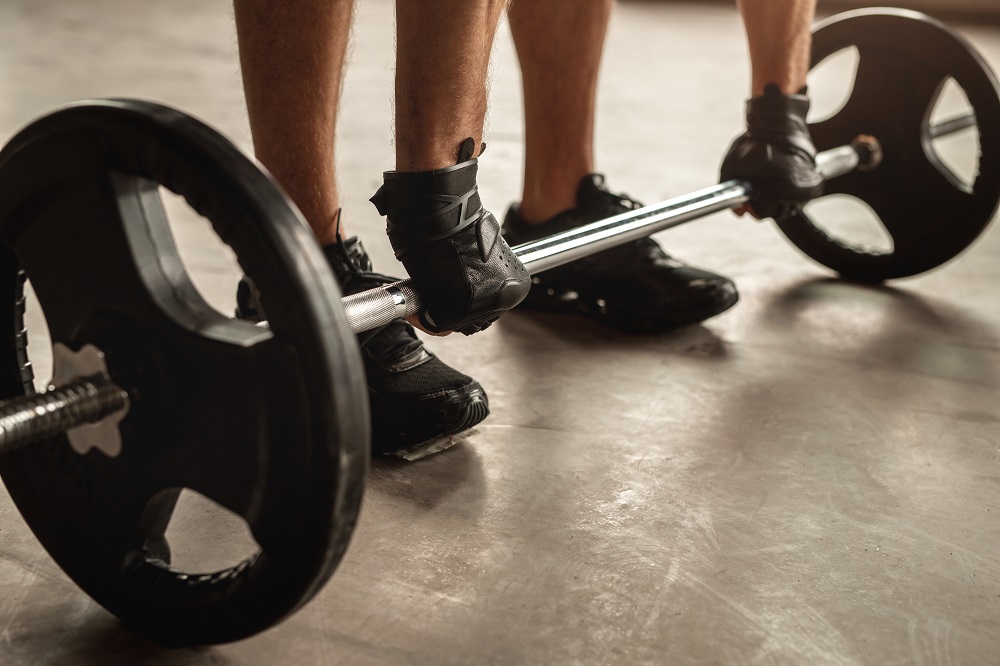Deload - what is strategic detraining and is it worth using?

Deload is a time of strategic detraining, a short period during which the athlete performs slightly lighter workouts. There are several ways to carry out a deload, but regardless of the method used, the purpose of thoughtful detraining is multi-faceted regeneration of the body, reducing the risk of injury, as well as accelerating progress in the future. How to carry out a deload and how long should it last? How often to use it? What should an athlete's diet look like during detraining?
Deload - what is it?
Deload is a period of strategic detraining. In other words, it is a time when the player focuses on regeneration, without giving up physical activity. Deload consists in reducing the volume or intensity of training when the body cumulate fatigue accumulated as a result of regular and demanding physical efforts.
Among physically active people, can usually determine the degree of physical condition, as well as the level of exhaust of the body. When the first indicator is higher than the second, can be observed the desired effects - improvement in condition or increase in strength. However, when the degree of exhaust of the body exceeds the level of physical condition, the form decreases, and the risk of injury and overtraining increases. Therefore, the deload should be done when there is a loss of enthusiasm and energy to undertake physical activity, and in addition, when is observed the lack of effectiveness of the training. Detraining is also worth planning if the athlete begins to suffer from pain and sports results deteriorate.
Among beginners, rarely hears about the deload, because they do not usually need detraining. However, from a certain level of advancement, when progress becomes more and more difficult and the risk of overtraining increases, deload can be helpful in further development of the figure and reducing the risk of injuries.
How to carry out a deload?
It is difficult to say how to make a deload. It depends on several factors, such as health, level of advancement or training period in which the player is currently. However, it is important to realize that reasonable detraining does not mean a complete break and does not consist in bypassing the gym with a wide arch, and lying on the couch. During the deload, you should continue to perform exercises, but not at the same level. It is crucial that for a certain period of time (usually for 7-14 days), perform a slightly lighter workout.
Deload can consist in reducing the intensity - then you can perform the same number of series and repetitions, but with less load. The solution may also be to reduce the training volume - then the same loads are used as during normal training, but taking into account a smaller number of series or repetitions, or a reduction in both values. In the event that the athlete balances on the verge of overtraining, the solution may be both to reduce the volume and intensity of training. However, it is worth to keep in mind that such a form of deload may make the form of the athlete worse.
During the deload, the training volume is usually reduced by 30-50%. Therefore, if so far the athlete has performed barbell press in 4 series of 10 repetitions, with a deload he should perform 2-3 series of 5-7 repetitions, while taking into account the lower load.
Deload - benefits
Deload can reduce the risk of nervous and muscular overload. In addition, it can have a positive effect on joints and tendons, which regenerate much more slowly than muscles. A well-planned and properly conducted deload can reduce the risk of injury and overtraining. Among experienced athletes, among whom the rate of muscle cell growth slows down after a certain period of training, deload can make new cell nuclei re-created in muscle fibres at a rapid pace. In addition, strategic detraining can enable progress in improving strength after the end of the deload, enabling further development and breaking down the own barriers.
How long should a deload take?
It is not possible to answer the question about the duration of the deload. It is an individual matter, which depends on individual predispositions and needs of the body, as well as the level of fatigue and intensity of training preceding deload. Therefore, it is worth listening to your own needs, remembering that tendons and joints need a long recovery time. Therefore, two lighter workouts may not be enough to strengthen the body. It is widely accepted that the duration of strategic detraining, which, among other, will enable the repair and reconstruction of damaged tissues, should last from one to two weeks. It usually lasts 7-10 days, but with intensive training it can last up to 14 days.

Diet during a deload
The diet during a deload, as well as before detraining, should be healthy, properly balanced and rich in macro-and micronutrients. However, divergent opinions among athletes appear in the context of an adequate supply of calories. One theory is that if you train less, you burn less energy, so you should reduce your daily calorie intake. Others believe that a slight excess of energy, amounting to about 200 kcal per day, does not constitute a significant difference in the daily balance, and can support the regeneration process.
The choice of whether to gently reduce the energy supply during the deload or not is yours. However, it is important that during the period of detraining, do not give up a balanced diet, and do not consume exorbitant amounts of food, because then instead of supporting the regeneration process, you can lead to the destruction of previous achievements.
What is important during a deload?
During a deload, in addition to reducing the volume of activities performed and paying attention to a healthy and balanced diet with adequate energy, it is also important to support the body in the process of regeneration and rest. Therefore, during a strategic break, you should take care of the right amount and quality of sleep, as well as effective rest. A good solution may be the use of a sauna, massage or recreational swimming. You should not forget about proper hydration and calming the body - yoga or meditation can be helpful.
How often should use a deload?
The frequency of use of a deload is, like its duration, an individual issue that should be adapted to the needs of the body. In addition, when considering the frequency of strategic detraining, it is worth considering several factors, such as:
- Athlete's age - the older the athlete, the more often it is worth including the deload in the training plan. Young lovers of an active lifestyle can do a deload once every few months, while older ones - every few weeks;
- Intensity of training - the more demanding exercises the athlete practices, the more often he should include in the training plan time for regeneration. Advanced athletes usually practice deload once every four weeks;
- Type of physical exercise - professional athletes, who sometimes train even twice a day, should use a deload more often. It is recommended to use strategic detraining even once every three weeks.
Listening to your own needs, you will certainly not miss the moment when you should slow down and regenerate the body. The determinant may also be a worse mood lasting for a long time, lack of willingness to undertake physical activity, as well as lack of progress.

Is deload necessary?
Many people wonder whether it is necessary to practice deload. Of course, there is no obligation to include detraining in the training plan, but it is worth considering its use, especially during intense training. The deload can bring a number of benefits, providing the body with full recovery and reducing the risk of injuries, as well as increasing the chance of improving athletic performance.
However, if the activities performed do not significantly burden the body, and the athlete's well-being is satisfactory, there is no need to perform detraining.
How to get back to training after a deload?
After a period of training break, you can easily return to the weights used before detraining the body. Since reducing the intensity of the exercises can positively affect the progress of training, the previous load may sometimes seem too light to the athlete. Then, without fear, you can increase the weight used during the activity.
Although many people are afraid that after the load period, the previously used loads will turn out to be too large, this claim has nothing to do with the truth. Since deload is a step in the back that will help the player to take two steps forward, after detraining you can immediately return to the right training tracks.

